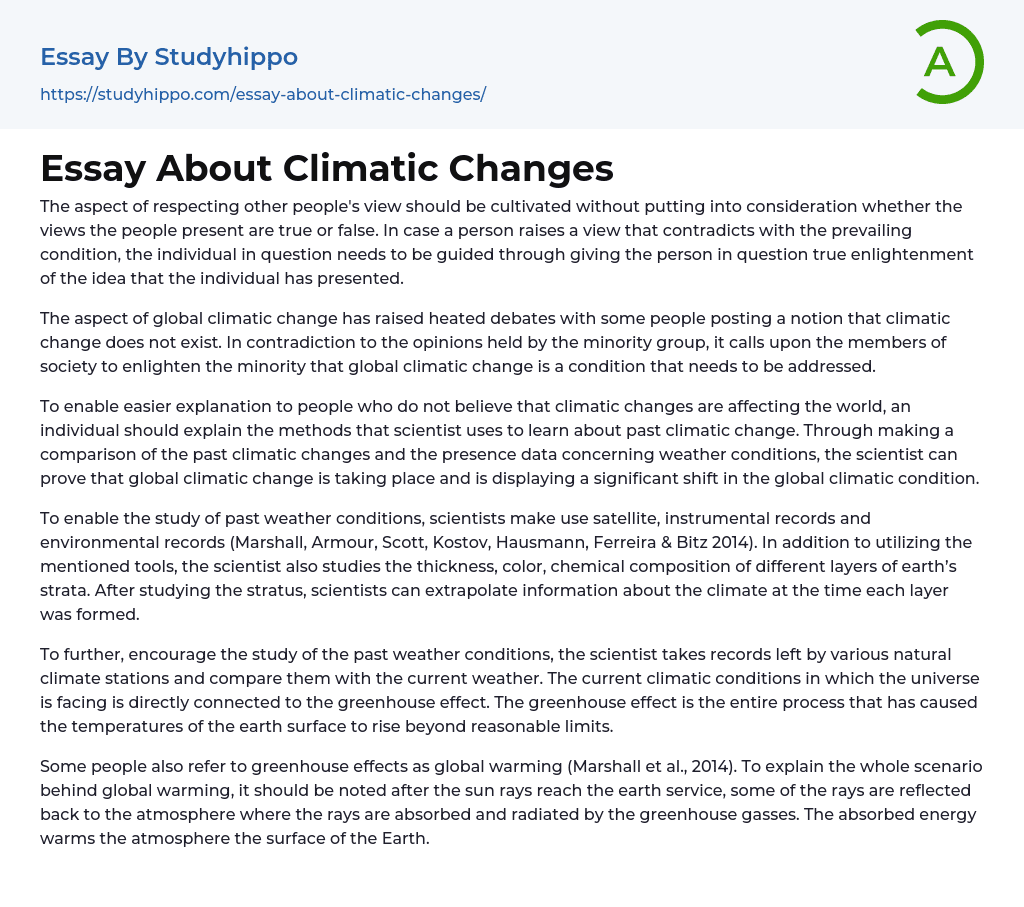It is essential to respect diverse viewpoints, regardless of their accuracy. When individuals express beliefs that contradict the popular opinion, it is important to guide them towards gaining a deeper understanding of their ideas. The subject of global climate change has led to heated debates, with some individuals arguing against its existence. Nevertheless, society should provide education on the actuality of global climate change and the urgency to address it. To assist those who are skeptical about the effects of climate change, explaining the scientific methods used for studying previous changes in climate can be advantageous.
The scientist can demonstrate global climatic change and a significant shift in global climate conditions by comparing past climatic changes with current weather data. To study past weather conditions, scientists utilize satellite data, instrumental records, and environmental records (Marshall et al., 20
...14). They also examine the thickness, color, and chemical composition of various layers of the earth's strata to infer information about previous climates. Furthermore, scientists compare natural climate station records with current weather data to further investigate past weather conditions. The present climatic conditions occurring worldwide are directly connected to the greenhouse effect.
The greenhouse effect, also called global warming, leads to a significant increase in surface temperatures on our planet (Marshall et al., 2014). This occurs when the sun's rays enter Earth's surface and some are reflected back into the atmosphere. Greenhouse gases absorb and emit these rays, causing both the atmosphere and Earth's surface to heat up. Marshall et al. confirm this explanation.
Global undesirable climate changes took place in 2014 as a result of the emission of gases originating from earth's processes, which create a barrier in the
atmosphere. This barrier traps excessive heat, leading to increased temperatures on the earth's surface. Despite being present in smaller quantities, carbon dioxide is an important gas discharged through natural processes such as respiration.
The concentration of carbon dioxide in the atmosphere is mainly increased by natural processes, but it has been significantly elevated due to the industrial revolution. If not properly regulated, this increased level of carbon dioxide results in higher temperatures in the affected area. Furthermore, climate change and depletion of the ozone layer are also significantly contributed to by volatile compounds from chlorofluorocarbons. The ozone layer plays a critical role in filtering out harmful rays of light from reaching the earth's surface.
The Intergovernmental Panel on Climate Change (2014) states that methane and nitrous oxide contribute to the greenhouse effect, leading to various consequences such as global warming, rising sea levels, reduced arctic sea ice, and glacial retreat.




